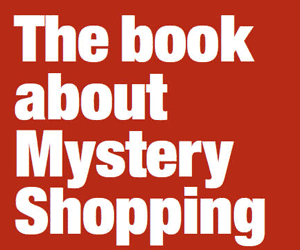
In an age of readily available customer data, why use Mystery Shopping?
There is a world of customer data readily available - data that provides invaluable insight into consumer wants and needs, our shopping behaviours, and how we feel both during and after a service interaction. As consumers, we are aware of the sophisticated algorithms leading to personalised marketing campaigns and the myriad of ways to provide feedback on our experience. And we are increasingly savvy about how we do this – with consumers now making best use of available feedback channels and AI to get the most from their experience. We are all quite familiar with the trick of complaining publicly via social media or leaving items in an online basket until a tempting discount email arrives to encourage the purchase.
For the last 10 – 15 years, it has felt that Mystery Shopping’s popularity has steadily declined. The mechanism feeling somewhat dated and clunky – an outdated dinosaur of the CX toolkit that risked extinction in the modern age. However, just like fashion, all things come back ‘on trend’ and Mystery Shopping’s star is rising once again.
Over the last 2 years, where we have been forced to spend more time online than in-person, the importance given to personal interactions and the ‘human touch’ has come into sharper focus. We have – collectively – realised the importance of face-to-face interaction and what difference being in the same physical space as another person can have. We have also become more discerning about where, how and who we spend our time (and money) with.
realised the importance of face-to-face interaction and what difference being in the same physical space as another person can have. We have also become more discerning about where, how and who we spend our time (and money) with.
This is true not just from a consumer perspective, but as employees too. In both situations we want to feel valued. And this is where Mystery Shopping can be used to great effect. (A Partnership of Exceptional Quality)
Mystery Shopping provides much more than a platform for the customer’s voice to be heard, it is:
- A tool to understand what actually happened to the customer and positively identify where improvements can be made
- A means to drive compliance to mandated or desired behaviours that have been identified as principal drivers of customer satisfaction
- An instrument to communicate effectively with frontline service teams, outlining the service framework that they need to follow
- A system to evaluate the success of a new training programme, to identify what went well and where improvements in communication and delivery can be made in the future
- A framework to reward, recognise and celebrate colleagues – and in turn inspire them to exceed customer expectations
- A way for organisations to demonstrate to both their employees and customers that customer service and people are at the heart of their company
- A commitment to continuous improvement by giving employees a tool to benchmark and improve their performance (which in turn increases customer satisfaction, and ultimately drives sales)
Mystery shopping – done well– is more than just a means of measuring the customer experience, it is an invaluable means of demonstrating the importance placed on customer service within any organisation, and that the organisation supports their most valuable commodity – their frontline employees who embody the brand.

By Danielle Sones
Experience Director at ABa Quality Monitoring







